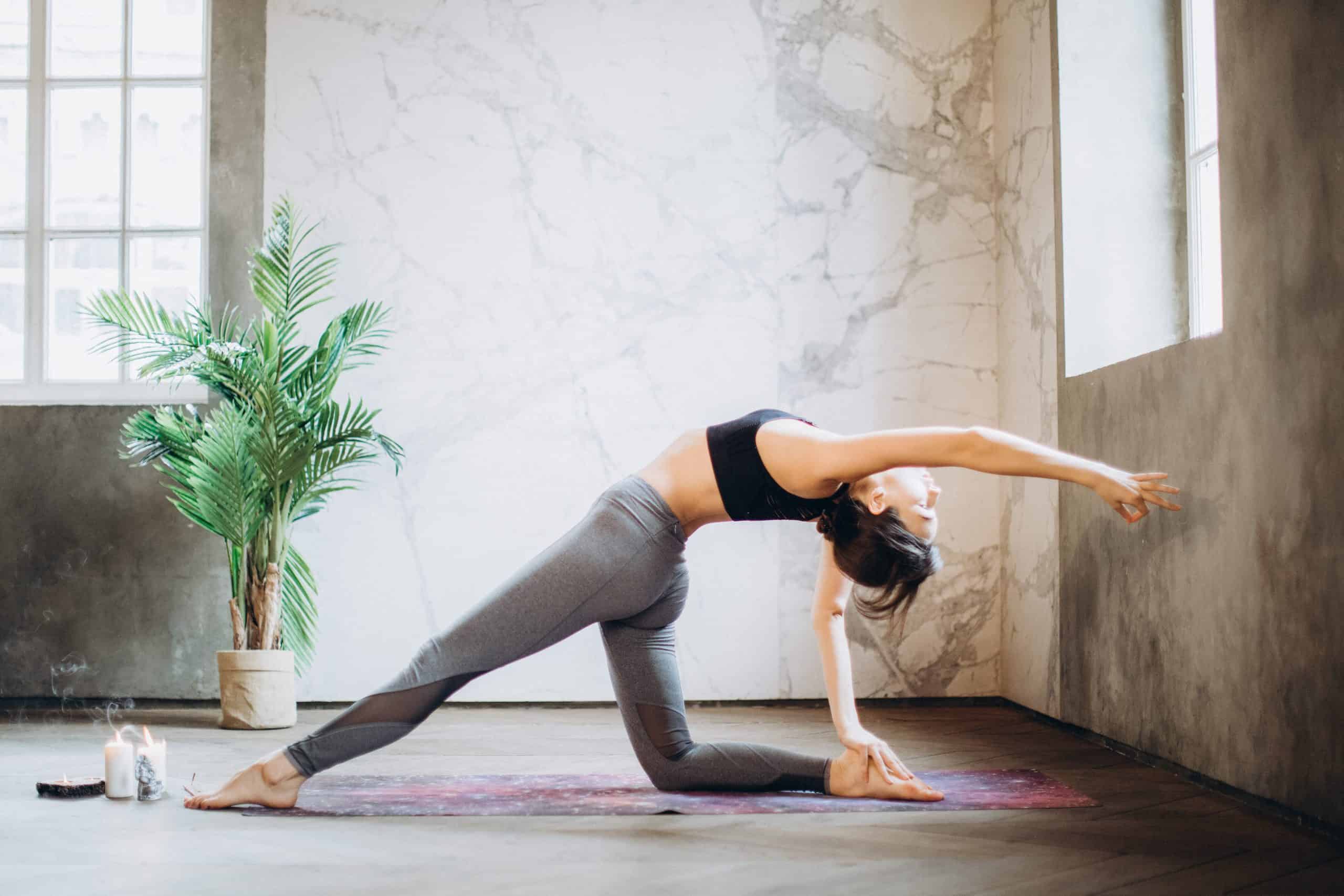We’re all looking for that miracle daily routine that keeps us burning fat and toning our bodies without even noticing it. Salma Hayek claims to have found it.
The stunning actress and newly-minted beauty guru says she rarely hits the gym like the rest of us mere mortals. “I don’t exercise,” she told People. “I just hold my body in a way that activates muscles all day long.”
According to Hayek, an expert in London taught her “how to hold my body in a way where the muscles are activated all day long.” The idea is “toning without clenching,” relaxing parts of the body that don’t need while simply creating an awareness of the muscles you are using as you do it. “So even when you brush your teeth, you’re working the muscles,” she proclaims.
All right, I’ll admit it. I was really skeptical of this one. But as it happens, there’s some truth to Salma’s tactics–which she says are based in restorative yoga.
First off, let’s talk yoga. If you haven’t tried it, it’s an amazing addition to your workout routine with potential full-body benefits–as research is bearing out more and more. One study published in European Journal of Preventive Cardiology actually showed the practice actually has some aerobic merit in addition to making those muscle groups lean, taut and toned all over.
With that information, I thought there might be something to this muscle-activation deal, so I asked my friend Joan Pagano, an NYC-based personal trainer and author of Strength Training Exercises for Women, for a validity check–and she was so happy I brought this up.
“It’s true that, as you develop kinesthetic awareness of using your muscles, you can consciously activate them in your daily activities to engage the core, stabilize the shoulder blades, contract your glutes to squat and your biceps to lift and carry,” she told me. “This is something we should all aim to do!”
Ah! And I wasn’t even aware that we needed to be that aware of our muscles in daily life.
Basically, Joan says that if Salma’s running around during her (sometimes) 20-hour workday while also activating muscle groups, she could be staying in decent shape if she had a solid level of fitness to start. Now, it’s still good to get your heart pumping with some traditional aerobic exercises–get on that bike, hit that treadmill, go for a swim, and so on–to keep your cardiovascular system primed and promote longevity.
And in terms of activating those muscle groups… you won’t necessarily build muscles by activating them throughout the day, but you can help maintain them with low-level contraction techniques. “You’ll also improve your posture, alignment and overall body mechanics,” Joan says.
So, let’s say you’re like Salma. You have basically no time to exercise. Like, blink-and-you’ll-miss-it space in your schedule. What’s one to do?
Ms. Pagano says that you should focus, at minimum, on getting in some simple body-weight exercises like squats, push-ups and planks to condition your muscles. For cardio, aim for 10-minute bursts of fast walking or stair climbing, attempting to rack up at least 30 minutes per day on most days of the week.
Then, once you have a base level of cardio fitness and muscle tone, you can try maintaining with Salma’s idea: activate muscle groups as you move through your day, and as you need them.
Joan has five ideas, which are all oh-so-easy:
“To engage your core and flatten your belly, “zip up” your abs as if you were zipping up a tight pair of jeans. Pull your navel in toward your spine, and then up, lifting the pelvic floor. This move trains the deep abdominal muscle that lies right under your jean zipper.
Stand up straight, rolling the shoulders down and back. Learn to hold them there to prevent rounding the back and developing a “forward slouch.”
When you bend and lift something, use the large muscles of your legs – the glutes, the quads and hamstrings – and practice the “hip hinge,” which means bending forward from the hips with your spine in neutral alignment.
Get up from any seated position without using your arms for support.
When you’re brushing your teeth, stand on one leg for balance and feel the muscles of that leg working to support you – especially in the ankles.
It’s good to be aware of the need for muscular awareness, right? I’ll never lift a box or brush my teeth the same way again.



